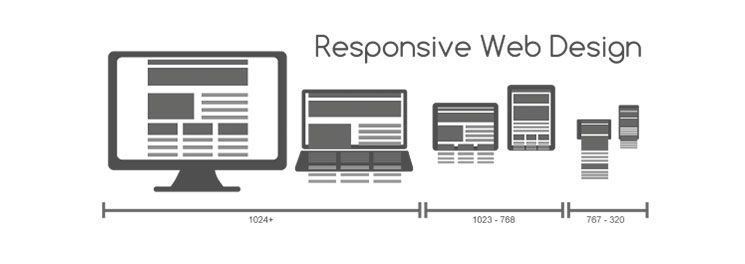Why Responsive Web Design Effects Your SEO
3jan 2014
This article touches on responsive web design and how it can impact your SEO performance.
Today webmasters are coming up against whether or not they should have a mobile site that is separate, or invest in making the site they already have more responsive. The term responsive design refers to a website that can respond to the screen of the device users are employing when visiting your site. It's an emerging market and one that is attractive for a variety of reasons.
How responsive web design works is still in the growing phase, and it will likely be an evolving process as more and more new devices like tablets and smart phones enter the market. It is likely that site response will adapt so that it is compatible on a number of devices, instead of targeting just one type. But ultimately, because users can now access a site from any number of different devices, responsiveness is a necessary feature to ensure any given site works properly no matter where it is accessed from. Fortunately, there are numerous benefits to this.
These are just some of the SEO benefits site owners will notice with responsive design:
- Drawing in better local SEO results
- Getting away from duplicate content
- SEO efforts onsite remain
- Google favors it
- You can retain your links
SEO Results on the Local Level
Responsive design can up your rankings specifically if you are focusing on local keywords that apply to business. Mobile devices mean people are often searching for things like directions to a local business, and that business' site is going to need to be responsive to work on the mobile device. In fact, 40 percent of Yelp searches come from it's app, and BGR has reported that 10 percent of every web search is made on a mobile device. Geo-specific parameters have an effect on mobile searches as well, so you want Google to recognize your site as appropriately responsive to get those users directed to you.
Problems With Duplicitous Content
Duplicate content can be a problem as site owners typically copy the same content when moving over to mobile versions. This duplicate content hurts the site's optimization making the site difficult to place in rankings. Tagging the content helps but Google won't always acknowledge the connection. And Bing and Yahoo don't even recognize tagging at all. This can place your site low on the search results, a killer for websites. Plus, by not creating a whole other mobile site, you save yourself plenty of hassle.
SEO Efforts Onsite Remain
One major hesitancy site owners have in considering responsive design is how to make sure the time intensive SEO efforts already made on the site remain applicable. SEO strategy is a lengthy process and when choosing an overhaul based on responsive design all of those original SEO efforts to get your site to the top of the search results remain in place. If you decided to move over to a mobile site you would have to start from scratch. Anchor text, link structuring, meta descriptions, tags--all of this will remain including your social sharing capabilities.
Here are some excellent examples of how it works:
Responsive Design is a Google Favorite
Google remains the big man on campus when it comes to search engines, even though other engines are pulling up in the ranks, most noticeably Bing. But for now, Google has the ability to call the shots and Google likes it's responsive design.
From a Google statement: “Google recommends webmasters follow the industry best practice of using responsive web design, namely serving the same HTML for all devices and using only CSS media queries to decide the rendering on each device.”
Plenty of consideration is placed on user experience with Google's algorithm specifically designed to this factor. Google wants users to enjoy the sites it points them to and favors social shares, the time a user stays on a site and how much they move around on that site. Site owners are then compensated for high marks in these areas with better rankings.
And since Google is now telling it's audience to work on responsive design, it is a clear sign that this investment will pay dividends in a real way.
You Can Retain Your Links
Building links has become incredibly exhaustive and expensive, and if you have already put in the time to set your site up with backlinks you likely don't want to start all over again. A new mobile site will mean putting in the energy to create those links again while responsive design allows you the keep the link formatting you've already built in.
And finally, sites that have undergone responsive design have a much better chance of being shared among users. With so many people logging on from mobile sites, individuals are far less likely to share with friends a site that is not easy to use on a tablet or smart phone. And your shared ratio is important as it is just one more way to make yourself look more attractive to the search engines.
